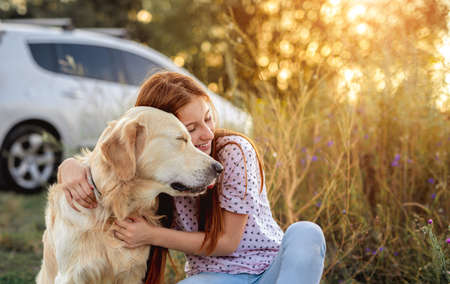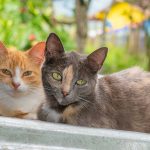1. Understanding Your Exotic Pet’s Natural Habitat
Creating a comfortable and natural environment for your exotic pet starts with understanding their native habitat. Every animal has specific needs based on where they come from, whether it’s a tropical rainforest, arid desert, or dense jungle. By researching your pet’s natural surroundings, you can design a space that helps them feel safe and thrive.
Researching Your Pet’s Native Environment
The first step in setting up the perfect habitat is learning about your pet’s origin. Different species have unique environmental requirements, including temperature, humidity, lighting, and terrain. Below is a general guide for common exotic pets:
| Exotic Pet | Native Habitat | Key Environmental Factors |
|---|---|---|
| Bearded Dragon | Australian Deserts | Warm temperatures, dry conditions, UVB lighting |
| Green Iguana | Tropical Rainforests of Central & South America | High humidity, climbing structures, UVB lighting |
| Crested Gecko | Tropical Forests of New Caledonia | Mild temperatures, moderate humidity, vertical enclosures |
| Burmese Python | Southeast Asian Jungles & Grasslands | Warm temperatures, high humidity, large enclosure space |
| Tarantula (Mexican Red Knee) | Drier Scrublands of Mexico | Drier substrate, hiding spots, moderate temperatures |
Mimicking Their Natural Surroundings at Home
A good habitat setup should closely resemble your pet’s wild environment. This means adjusting factors like temperature control, proper lighting, and the right substrate (bedding material). For example:
- Tropical reptiles: Need high humidity and UVB lighting to stay healthy.
- Aquatic turtles: Require both water areas and dry basking spots.
- Bush-dwelling animals: Benefit from dense foliage and hiding places.
- Nocturnal species: Prefer dim lighting and quiet spaces during the day.
The Importance of Temperature & Humidity Control
Your exotic pet relies on the right climate to maintain their health. Investing in thermometers and hygrometers can help you monitor temperature and humidity levels accurately. Here are some general guidelines:
| Pet Type | Temperature Range (°F) | Humidity Level (%) |
|---|---|---|
| Tropical Reptiles (Iguanas, Geckos) | 75-90°F (with basking spot 95°F+) | 60-80% |
| Aquatic Turtles | Basking area: 85-95°F / Water: 75-80°F | Around 50-70% |
| Tarantulas & Scorpions | 70-85°F | Drier species: 40-60% / Tropical species: 70-80% |
| Savannah Monitors & Desert Lizards | Basking spot: 100-120°F / Cooler side: 75-85°F | Around 30-50% |
| Pythons & Boas (Large Snakes) | Basking area: 85-95°F / Ambient temp: 75-85°F | Around 50-70% |
Selecting the Right Substrate & Enclosure Setup
The type of substrate you use plays a significant role in keeping your pet comfortable. Choose materials that mimic their natural flooring while ensuring safety.
- Sandy substrates: Ideal for desert reptiles like bearded dragons.
- Moss or coconut fiber: Best for tropical species needing moisture retention.
- Bark chips or soil mix: Works well for burrowing animals like tarantulas.
- Aquatic gravel or sand: Suitable for water-based pets like turtles.
- Papertowels or reptile carpet: Great for young reptiles or easy cleaning setups.
Avoiding Harmful Materials
Certain materials can be dangerous to exotic pets. Avoid cedar or pine shavings as they release harmful oils that can affect respiratory health. Also, steer clear of small loose particles that could cause impaction if ingested.
The Key to a Happy Exotic Pet Starts with Their Habitat!
Your exotic pet’s enclosure should feel as close to home as possible. By understanding their natural environment and adapting it into their living space, you ensure they live a happy and healthy life!
2. Choosing the Right Enclosure and Accessories
Creating a natural and comfortable environment for your exotic pet starts with selecting the right enclosure. The type of enclosure you choose depends on your pets species, size, and natural habitat. Whether its a tank, cage, or terrarium, it should provide enough space for movement, proper ventilation, and security.
Selecting the Appropriate Enclosure
Different exotic pets have different housing needs. Below is a quick guide to help you determine the best enclosure type for your pet:
| Pet Type | Recommended Enclosure | Key Features |
|---|---|---|
| Reptiles (e.g., geckos, snakes) | Glass terrarium with secure lid | Proper heating, UV lighting, humidity control |
| Birds (e.g., parrots, finches) | Spacious wire cage with horizontal bars | Sufficient space for flying, perches, food and water dishes |
| Small mammals (e.g., hedgehogs, sugar gliders) | A well-ventilated cage or large plastic bin | Nesting area, exercise wheel, soft bedding |
| Aquatic pets (e.g., turtles, amphibians) | Aquarium or semi-aquatic tank | Water filtration system, basking area, temperature control |
Essential Accessories for Comfort and Stimulation
Your exotic pet’s enclosure should mimic its natural environment as closely as possible. Adding essential accessories will help make the space feel safe and comfortable.
Hiding Spots
A hiding spot gives your pet a sense of security. Options include small caves, hollow logs, or even artificial plants that provide cover.
Climbing Structures
If your pet enjoys climbing, adding branches, ropes, or platforms can encourage natural behaviors and provide exercise.
Bedding Materials
The right bedding depends on your pet’s needs. Some common bedding choices include:
- Coconut fiber: Great for reptiles that need humidity.
- Pine or aspen shavings: Suitable for small mammals but avoid cedar as it can be harmful.
- Paper-based bedding: Safe and dust-free option for many pets.
- Moss or leaf litter: Ideal for amphibians needing moisture retention.
The Importance of Proper Setup
A well-planned enclosure ensures your pet feels at home while reducing stress-related health issues. Make sure to research your specific pet’s requirements before setting up their habitat to create the most natural environment possible.

3. Regulating Temperature, Humidity, and Lighting
Creating the perfect environment for your exotic pet means ensuring the right temperature, humidity levels, and lighting. These factors directly affect their health, behavior, and daily routines. Different species have specific needs, so its important to replicate their natural habitat as closely as possible.
Maintaining the Right Temperature
Temperature regulation is crucial because exotic pets often rely on external heat sources to regulate their body temperature. Here’s a basic guide for some common exotic pets:
| Pet Type | Optimal Temperature Range (°F) | Heating Options |
|---|---|---|
| Bearded Dragon | 75-85°F (cool side), 95-105°F (basking spot) | Basking lamp, ceramic heater |
| Corn Snake | 75-85°F | Under-tank heater, heat lamp |
| Tropical Frog | 72-82°F | Ceramic heater, heating pad |
| Tarantula | 70-85°F | No direct heat needed; room temperature control |
| Aquatic Turtle | 75-85°F (water), 85-95°F (basking spot) | Aquarium heater, basking lamp |
Avoid drastic temperature fluctuations by using thermostats and thermometers to monitor the habitat regularly.
Managing Humidity Levels
The right humidity level is just as important as temperature. Too much moisture can cause mold and respiratory issues, while too little can lead to dehydration or shedding problems in reptiles. Heres a general guideline:
| Pet Type | Ideal Humidity Level (%) | Mist/Spray Frequency |
|---|---|---|
| Tropical Reptiles (e.g., Chameleons, Tree Frogs) | 60-80% | Mist 1-2 times daily, use a humidifier if needed |
| Tortoises (Desert Species) | 30-50% | Mist occasionally; provide a humid hide |
| Tarantulas (Tropical Species) | 70-80% | Mist lightly every few days; avoid overwatering substrate |
| Corn Snakes & Ball Pythons | 50-60% | Mist lightly as needed; provide a water bowl for humidity balance |
| Aquatic Turtles | N/A (Water Environment) | No misting required; keep water clean and at proper temperature |
You can maintain proper humidity by misting the enclosure, using moisture-retaining substrates like coconut fiber or sphagnum moss, and adding water bowls or foggers.
Selecting the Proper Lighting Setup
The right lighting setup helps regulate your pet’s sleep cycles, digestion, and overall well-being. Exotic pets typically need three types of lighting:
Basking/Heat Lamps:
Provide warmth for reptiles that require sun-like heat.
UVB Lighting:
Essential for reptiles that need UV exposure to metabolize calcium properly.
LED or Natural Light:
Helps maintain a natural day/night cycle for nocturnal animals.
If your pet requires UVB light (such as bearded dragons or turtles), make sure to replace the bulb every 6-12 months since UV output diminishes over time.
FAQs:
How do I know if my pet is too hot or too cold?
Your pet may show signs such as lethargy if too cold or excessive hiding if too hot. Use thermometers to check temperatures frequently.
Do all exotic pets need UVB lighting?
No. Some species like snakes don’t require it, but reptiles like bearded dragons and turtles do.
How can I increase humidity without making my pet’s enclosure too wet?
You can add live plants, use moisture-holding substrates, or place a shallow water dish inside the enclosure.
Is it okay to leave heating lamps on all night?
No. Many reptiles need a nighttime temperature drop. Use ceramic heat emitters if overnight heating is necessary.
How often should I check the temperature and humidity levels?
You should check both at least once daily to ensure your pets habitat remains stable.
A properly regulated environment ensures your exotic pet stays healthy and stress-free. By maintaining the right temperature, humidity, and lighting setup, you’re creating a home that closely mimics their natural habitat!
4. Creating a Balanced and Enriching Diet
Providing your exotic pet with a diet that mimics what they would eat in the wild is essential for their health and happiness. A well-balanced diet should include the right nutrients, feeding schedule, and enrichment strategies to keep them engaged during mealtime.
Understanding Your Pet’s Natural Diet
Each exotic pet has unique dietary needs based on their species. Some are herbivores, while others are omnivores or carnivores. Researching their natural food sources will help you create a meal plan that supports their overall well-being.
| Pet Type | Natural Diet | Recommended Foods |
|---|---|---|
| Reptiles (e.g., Bearded Dragons) | Omnivorous – insects, leafy greens, fruits | Dubia roaches, collard greens, squash |
| Birds (e.g., Parrots) | Nuts, seeds, fruits, vegetables | Pumpkin seeds, apples, bell peppers |
| Mammals (e.g., Sugar Gliders) | Nectar, fruits, protein sources | Honey, mealworms, papaya |
| Aquatic Pets (e.g., Axolotls) | Carnivorous – small aquatic creatures | Earthworms, bloodworms, shrimp |
Nutritional Balance and Variety
A proper diet should include essential proteins, fats, vitamins, and minerals. Avoid processed or artificial foods that could harm your pet’s health. Offering a variety of foods ensures they receive all necessary nutrients while preventing boredom.
Avoiding Harmful Foods
Certain human foods can be toxic to exotic pets. Always research before introducing new items into their diet.
- No processed foods: Avoid sugary or salty snacks.
- No toxic fruits or plants: Avocados and chocolate can be dangerous for many pets.
- No improper protein sources: Some meats may contain harmful bacteria or additives.
Mental Stimulation Through Feeding Enrichment
Mimicking how your pet would forage or hunt in the wild keeps them mentally and physically stimulated. Here are some ways to make mealtime more engaging:
- Puzzle Feeders: Encourages problem-solving by making pets work for their food.
- Foraging Toys: Hides food within objects to stimulate natural behaviors.
- Diverse Presentation: Hanging fruits for birds or placing live insects for reptiles adds excitement.
- Scent Trails: Encourages small mammals to search for hidden treats using their sense of smell.
The Importance of Hydration
Adequate water intake is just as important as a proper diet. Some exotic pets prefer drinking from moving water sources like fountains, while others get hydration through moisture-rich foods.
- Bowl vs. Dripper: Some reptiles prefer dripping water over still bowls.
- Misting Systems: Beneficial for high-humidity species like chameleons.
- Mist Fruits & Vegetables: Provides extra hydration through natural food sources.
A balanced diet combined with engaging feeding methods will help ensure your exotic pet stays healthy and happy in their environment.
5. Minimizing Stress and Encouraging Natural Behaviors
Creating a natural and comfortable environment for your exotic pet involves reducing stress and encouraging behaviors they would naturally exhibit in the wild. Exotic pets can be sensitive to their surroundings, so its important to minimize loud noises, sudden disturbances, and environmental changes that could cause anxiety.
Reducing Stressors in Your Pet’s Environment
Exotic pets often thrive in calm and stable environments. Loud noises, frequent handling, and sudden movements can cause stress, leading to health issues and behavioral problems. Here are some simple ways to reduce stressors:
| Stress Factor | How to Minimize It |
|---|---|
| Loud Noises | Keep your pet’s enclosure away from TVs, speakers, and high-traffic areas. |
| Sudden Disturbances | Avoid making abrupt movements around your pet’s habitat. |
| Frequent Handling | Handle your pet only when necessary and allow them time to adjust. |
| Environmental Changes | Maintain a consistent temperature, lighting, and humidity level. |
Encouraging Natural Behaviors
Your exotic pet will feel more comfortable if they can engage in natural activities like burrowing, climbing, or hunting for food. Providing an environment that supports these behaviors is essential for their well-being.
Burrowing Animals
If your pet is a burrower (such as certain reptiles or small mammals), make sure their enclosure includes deep substrate materials like sand, soil, or coconut fiber. This allows them to dig and hide as they would in the wild.
Climbing Species
If your pet enjoys climbing (such as arboreal reptiles or birds), provide branches, vines, or platforms within their habitat. This gives them exercise while replicating their natural living conditions.
Pets That Hunt for Food
Carnivorous and insect-eating pets benefit from feeding methods that mimic hunting. Instead of offering food in a bowl, try live feeder insects or hiding food in different locations to encourage foraging behavior.
The Importance of Routine and Stability
A predictable daily routine helps exotic pets feel secure in their environment. Try to maintain consistent feeding times, lighting schedules, and cleaning routines to reduce unnecessary stress.


